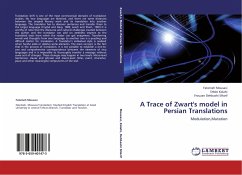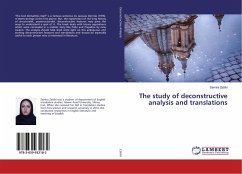
Strategies Applied in German Translations of Witold Gombrowicz's Diary
Versandkostenfrei!
Versandfertig in 6-10 Tagen
52,99 €
inkl. MwSt.

PAYBACK Punkte
26 °P sammeln!
The reception of the works by Witold Gombrowicz in German-speaking countries is of a dual nature. This phenomenon consists in the fact that a significant number of translations, analyses and theatre adaptations of the works by this Polish writer was of a particular interest to a narrow circle of literary scholars, theatre experts and journalists. In the first part the author discusses the history of the reception of Witold Gombrowicz Diary in German speaking countries. The second part is the analysis of the most important decisions of the translator in the lexical-semantic, cultural and aesthe...
The reception of the works by Witold Gombrowicz in German-speaking countries is of a dual nature. This phenomenon consists in the fact that a significant number of translations, analyses and theatre adaptations of the works by this Polish writer was of a particular interest to a narrow circle of literary scholars, theatre experts and journalists. In the first part the author discusses the history of the reception of Witold Gombrowicz Diary in German speaking countries. The second part is the analysis of the most important decisions of the translator in the lexical-semantic, cultural and aesthetic code. The presented examples of translating solutions within the scope of idiomatic expressions, colloquial expressions, irony and the writer's style, illustrate how close the picture of the world in the original text is to its German versions and in what way the transposition of its individual elements was carried out. The analysis should be useful to literary translators and scholars.












